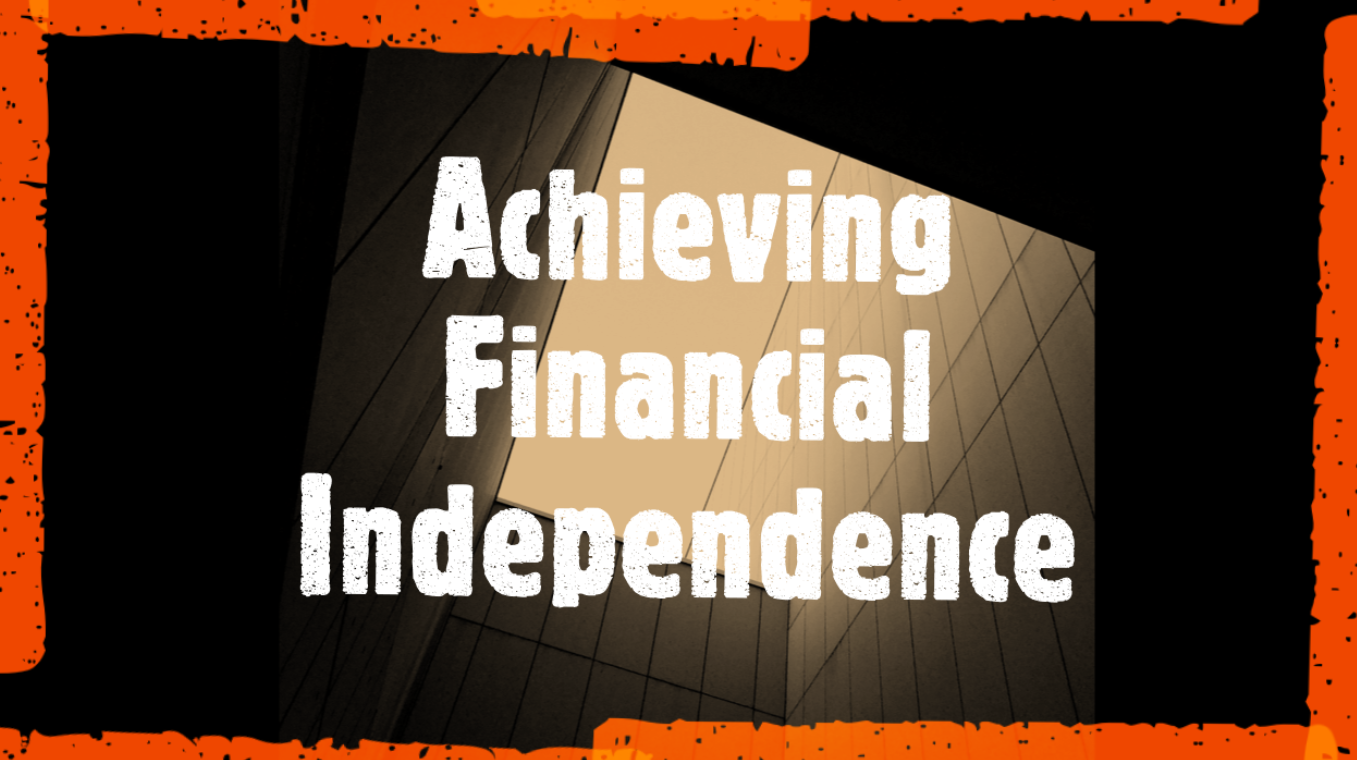To achieve financial freedom is one objective close to my heart, like many of you. We all know something about financial independence and work towards the same. But, only a handful succeed to achieve true financial freedom in India.
The focus here is to break the process into clear steps and help you strategize for financial freedom early in your life.
What is financial freedom?
Financial freedom (aka financial independence) is more than just being able to meet your expenses. It means being able to pursue life goals without worrying about sustaining life on your terms. Let us understand it in greater depth.
- Financial freedom means having enough passive income to be able to meet living expenses
- Passive income means cash inflows from investments or savings without being actively engaged in work
- The investor holds adequate investment assets that generate enough cash flow to meet wishes beyond just the household expenses
- And finally, and most importantly, financial freedom is not a goal; it is a way of life
Achieving financial freedom is not challenging but requires a focused approach and active efforts towards the goal. Very few people are willing to plan meticulously and therefore fail.
There is no best time to start, but the sooner, the better. The age group between 22-25years is ideal to begin the planning process. At this age, responsibilities are few, and one can save money after taking care of living expenses. However, you are not late at any age to plan for your life. Just start.
Financial freedom secures your future and helps you to follow your passion. It gives you time and resources to fulfil dreams that you always wanted to pursue.
Do read about my pursuing hobbies here Pursue your hobbies and earn immeasurable returns.
Achieving financial freedom is not everyone’s cup of tea
All of the above sounds very exciting. And everyone would like to become financially independent. However, only a few people reach there. Ever wondered why?
One of the hard secrets you should gulp is that financial independence doesn’t just happen. The process starts with a detailed plan, and a firm commitment is required to achieve the target.
Here are ten highly recommended steps to put you forth to become financially independent.
01. Decide you want to achieve it more than you are fearful of it
To achieve financial independence, you must overcome fear and make some lifestyle changes. Most people are afraid of the commitment required to achieve this goal. Further, you must have the patience to attain financial freedom.
To achieve financial independence is not a sprint; it is a marathon. You must exercise financial discipline over a long period.
02. Set realistic goals
You have to choose a reasonable and attainable goal. Clearly state how much you want to have in your bank account and your investments. The clearer the target, the more are the chances that you will achieve them.
To climb the mountain of financial freedom, a plan to save regularly works better than jumping to advanced planning techniques. Slow and steady wins the race. You should be clear about the monetary situation, futuristic to plan for common obstacles expected in the path and then arrange for the goal accordingly.
03. Save more and spend less
One crucial step is to lower your recurring expenses. A deeper look at your lifestyle will help you split costs into avoidable vs un-avoidable. The former is our target, and the intention is to analyze the portion to curtail.
Firstly, it helps you provide the much needed spare cash to accomplish the investment action.
Secondly, controlling expenses always weigh more than trying to achieve higher savings, especially when you begin this journey.
Lastly, lower expenses require a lower target corpus that you need to save for your retirement.
Let us understand through an example. Couple A earns Rs. 1,00,000 per month, saves Rs. 70,000 and invests @10% return and spends Rs. 30,000 to manage the monthly chores. Couple B earns Rs. 2,00,000 p.m, saves Rs. 1,00,000 p.m @ 10% return and spends Rs. 1,00,000 per month.
Of the two, we would expect Couple A to achieve financial freedom earlier compared to Couple B.
The reason is pretty simple. Couple A has lower expenses. They need a smaller corpus when they retire (everything else identical, e.g. inflation, return on investment, etc.).
04. Plan for multiple sources of income
A well-known saying, ‘Don’t put all the eggs in one basket,’ comes to life here. It is essential to diversify investments and income sources. Whether self-employed or in a job, one must create a secondary source of income.
Follow the golden principle, increase your savings, and reduce debt. In the words of legendary investor Warren Buffett, only multiple income sources can lead to financial independence. An investor has done injustice to themselves if there is no secondary income source by 45 years of age. A lot depends on when one starts the savings process, but the point is not to focus on 45 years of age. The focus is instead on the concept that one should develop multiple sources of income.
05. Plan income from investments
Another necessary step in the journey to becoming financially independent is to plan for income from investments. Besides financial security, assets help you generate consistent income. Based on the risk profile, you may choose the type of investment like mutual funds, public provident funds, fixed deposits, direct equity shares etc.
06. Target zero debt
Interest paid on debt is the biggest obstacle in the journey of financial freedom. When you are obliged to pay the interests and repay the debt, it acts as a deterrent to building the corpus. One needs to set a goal to retire the debt (costliest debt first) as early as possible.
07. Create an emergency fund
Create an emergency corpus that will serve you during an unfortunate event like a temporary job loss, medical emergency, or other such need. Fixed costs like food expenses, EMIs, kids school fees do not change with a change in financial situation.
The emergency fund helps you meet immediate financial requirements. As a rule of thumb, living expenses of 12-18 months should be the size of your emergency fund.
A survey conducted by Spending Behaviour in India shows 60% of Indians have less than Rs 5,000 in their savings account. Almost 90% of young Indians have less than Rs 25,000 in their emergency fund.
Read more about emergency corpus in my article ‘Thumb rules of financial planning.‘
08. Plan well for tax costs
Tax can be costly if not planned well. Any significant outflow can dent your savings. Make any investment decisions keeping in mind the tax impact. Haphazard investing or selling decisions may not allow you enough time to think about tax outcomes, ultimately leading you to pay more tax.
Plan well to avail maximum benefit of tax deductions every year. Some of the most popular exemptions for your reference are as under:
- Section 80C lists the available investments as a deduction from taxable income, subject to a maximum of Rs 1.5 Lakhs per annum.
- Investment in specific mutual funds and pension plans is exempted under section 80CCC
- Exemption from income by investing into National Pension Scheme (NPS), capped to Rs 50,000 per year under section 80CCD
- Section 80D exempts costs incurred for health check-up and health insurance premium
- Donations can be made under section 80G to certain charitable institutions and relief funds
- Section 80GGA exempts donations made towards scientific research or rural development
- Deductions from income from house property
- Etc.
09. Buy sufficient insurance cover
A medical emergency can create an unprecedented hole in your pocket and derail your savings plan. Both life insurance and health insurance are equally important, depending on your stage of life and circumstances.
Read more about “Life Insurance” and “Health Insurance” here.
10. Review progress and keep track of your investments
Believe in your plan. Work meticulously towards the goal, make suitable investments and then let them grow.
It does not mean once invested, you should forget about the investments. Keep an eye on the performance of your assets and make any changes, if necessary. Professionals manage mutual funds, and there is no need to track the performance continuously. However, we highly recommend an annual review of investment performance.
Also read How to accumulate Rs 1 crore in 10 years.
To conclude
To be financially free and achieve financial independence is not easy and requires a fair bit of planning. Further, just making a plan is not all. Following the same religiously is critical. Believe in yourself, and as long as you don’t give up and remain committed, you will achieve the goal.
Be wise, get wealthy and be financially independent.
—————————————-
Sandeep Sharma, CFA (India), Master in Financial Analysis (MFA), is the author of this article. Sandeep started his career as a sell-side equity analyst at Hem securities. After a decade long successful career, he switched gears to become a full-time trader managing money for his clients.
The co-author, Sagar Parikh, is a senior finance professional with over fifteen years of work experience in corporate finance and has an affinity for personal finance and investment management. Please leave your comment or share thoughts on this article via email at decodefinance.in@gmail.com. For more articles, please visit the website www.decodefinance.in.
Disclaimer:
The author/publisher have used their knowledge, experience, and understanding of the subject to write this article. Any views, opinions, and thoughts mentioned in the article belong solely to the author and not necessarily to the author’s employer (past or current), organization, committee, or other group or individual.
Under any circumstances, the author/publisher shall not be liable for any views or analysis expressed in this note. Further, the opinions expressed are not binding on any authority or Court. We advise readers to consult their financial advisor for assistance in their specific case.





Very informative and eye opener article
Thank you
Awesome write up
Very well written note and a perfect execution guide to start planning for FI, especially from for youngsters. However i have following thoughts/views:
1. Financial Independence is about getting CONTROL. Control over your time & control over your finances.
2. Achieving FI (partial or full) allows you to pursue your passion and spend time with your loved ones and doing what you enjoy. This in turns boost your mental health increasing productivity while supporting longevity.
3. FI is not a destination but a way of life or journey. One must not drop their guards and shall continue their journey of learning & development, for market /economic landscape may shift or change which may cause long lasting damage to your assets / investment base.
Lastly, I have a contrary view on debt. There is a power in ‘leverage’ to boost your investment /asset base. Agree that debt is a double edged sword but with smart planning & fiscal discipline, debt can boost your asset base hence boosting ur chances of achieving FI sooner. Also the value of debt reduces with the impact of inflation. Those who don’t specialise in economics must take professional help & guidance. That said, it may be difficult in india due to high interest rates but it must not be ignored.